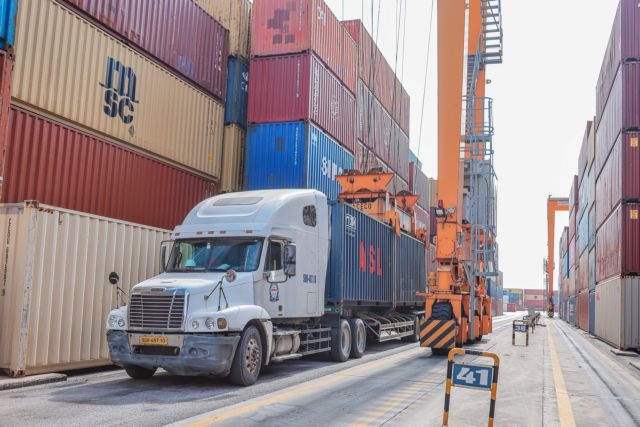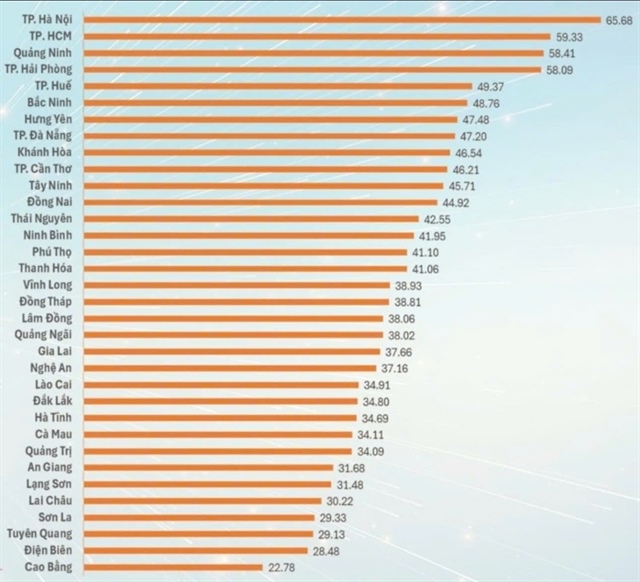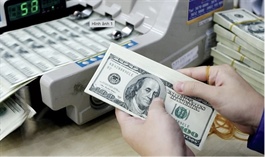ADB raises Việt Nam’s 2025 growth forecast to 6.7 per cent
ADB raises Việt Nam’s 2025 growth forecast to 6.7 per cent
Inflation projections are slightly below the previous estimates published in April this year.

Goods being loaded onto a truck at South Đình Vũ Port in the northern city of Hải Phòng. — VNA/VNS Photo |
The Asian Development Bank (ADB) has revised Việt Nam’s economic growth forecast, raising it to 6.7 per cent in 2025 and 6 per cent in 2026, according to ADB’s flagship annual economic publication released on Tuesday.
Inflation projections are slightly lower than the previous estimates published in April of this year.
A surge in exports ahead of the US tariff hikes and the Government’s expansionary policies fuelled economic growth in the first half of 2025. However, growth is expected to slow for the rest of the year due to the impact of the reciprocal tariffs that took effect on August 7. While the domestic economy remains resilient, growth is expected to moderate from the strong performance in the first half of 2025.
“Better coordination between fiscal execution and monetary policies will help avoid overburdening monetary tools and preserve macro-financial stability,” said ADB Country Director for Việt Nam Shantanu Chakraborty.
“In the long term, wide-ranging regulatory reforms must tackle structural challenges, like ensuring climate resilience, boosting private sector competitiveness, enhancing the efficiency of State-owned enterprises, tax modernisation and digital transformation. This is vital for a more balanced growth model.”
US reciprocal tariffs on Việt Nam, 20 per cent on imports and 40 per cent on transshipped goods, pose significant downside risks to near-term growth. For the remainder of the year, these tariffs are expected to weigh on trade and investment, underscoring the urgency of structural reforms to foster a more balanced growth model, supported by stronger domestic demand and more diversified export markets to cushion tariff-related shocks.
Inflation is projected to reach 3.9 per cent in 2025, easing slightly to 3.8 per cent in 2026. The decline in global energy prices has helped lower transportation costs, which account for a significant share of the consumer price basket.
Nguyễn Bá Hùng, chief economist of ADB in Việt Nam, said that effective public investment is key to sustaining growth and easing infrastructure bottlenecks. With public debt at less than 34 per cent of GDP, well below the statutory ceiling of 60 per cent, Việt Nam still has considerable fiscal space to support growth.
He stressed that deep institutional reforms would help streamline the legal environment, improve disbursement efficiency and boost domestic economic activity.
“With a favourable fiscal position, the Government can implement growth-stimulating measures, such as targeted tax cuts, lowering compliance costs for businesses and increasing social spending for low-income households. Coupled with structural reforms to improve the business environment and labour productivity, these policies would deliver maximum impact. The fiscal deficit is projected at around 3.8 per cent of GDP in 2025,” Hùng said.
However, ADB also expressed concern that limited capacity in planning, implementation and project management at all levels continues to hinder timely disbursement.
Domestic consumption remains supported by accommodative fiscal and monetary policies. Retail sales rose by 9.4 per cent in the first eight months of 2025 compared with the same period last year, driven by a continued two-per-cent VAT cut, lower environmental taxes on fuel and sweeping administrative and tax reforms that have reduced costs.
He added that the weakening of manufacturing and exports, partly due to US tariffs, could dampen demand for logistics, finance and other business services in the final months of 2025.
“If trade tensions persist, investment may slow down, weighing on growth in high-value service sectors in 2026,” he added.
While maintaining a positive outlook for Việt Nam in 2025 and 2026, the Asian Development Outlook in September highlighted several risks stemming from both global uncertainties and domestic factors.
Should the global economic environment weaken more than anticipated, driven by slower growth among major trading partners and heightened financial market volatility, economic headwinds would intensify.
Domestically, although public investment reforms have provided support, rising financial vulnerabilities and delays in policy implementation could constrain the effectiveness of stimulus measures.
- 08:34 01/10/2025



























